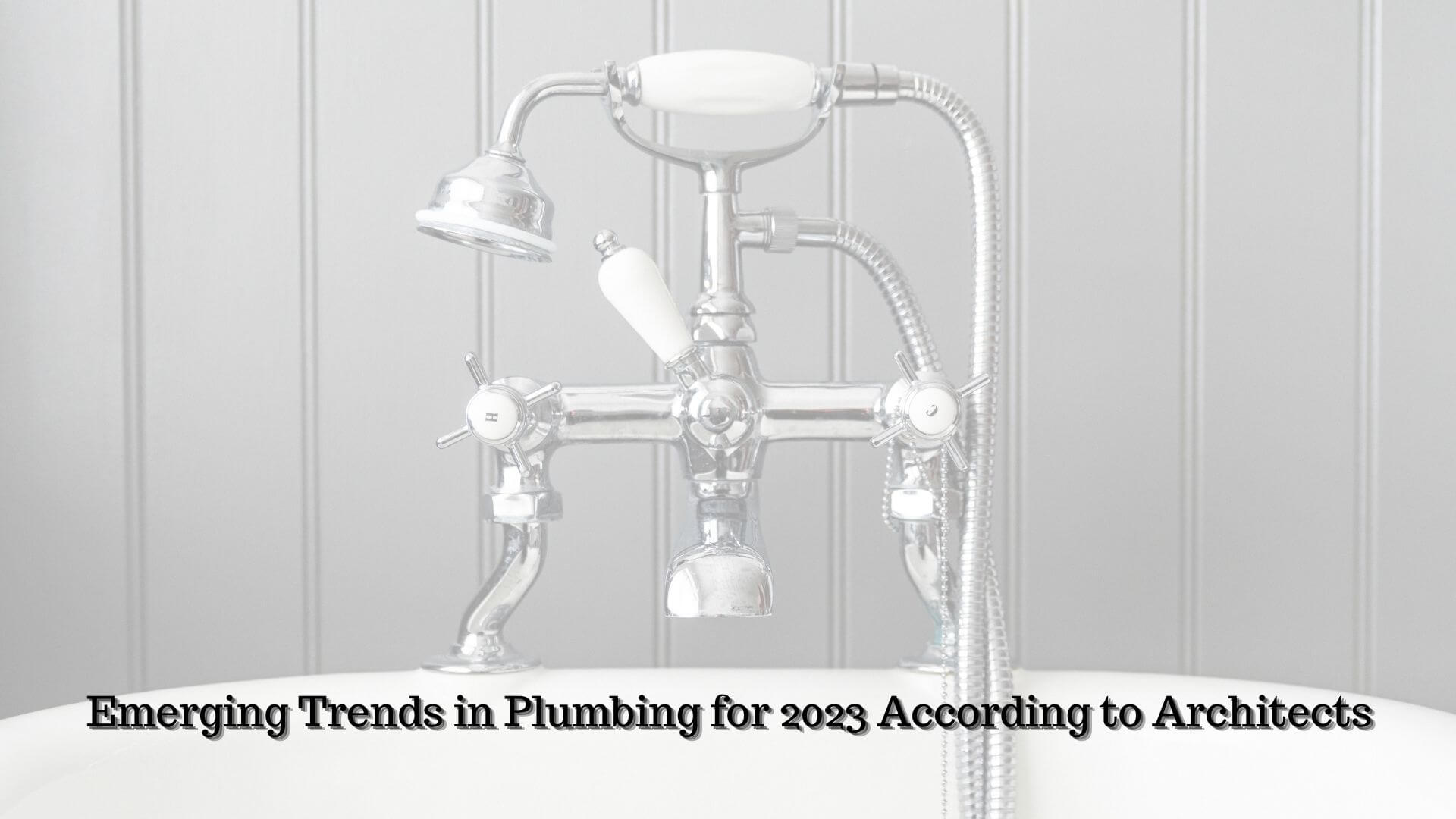Architects can give input in how a plumbing system of a home should look like. They can offer many helpful ideas for energy efficiency, water conservation, beautiful plumbing design, and so on.
If you are in the plumbing industry, you must stay up to date with the emerging trends to keep offering your customers the best options.
Is it necessary for you, as a homeowner, to know the emerging plumbing trends? Yes! A lot of things have changed in the home improvement industry over the years, and plumbing has not been left behind. If you are about to order a plumbing overhaul in your home to upgrade the system, you need to know what is trending.
Usually, the benefit of going for the latest trends in the plumbing industry is that newer technologies save water, you can track the water usage using smart tech, and be able to safeguard the environment.
As home improvement needs change, the leaking roof internal repair methods change, the plumbing repair needs change too. Everything keeps evolving, so it is to your best interest to stay updated.
Here are the top trends in plumbing for 2023 and beyond:
1. Exposed plumbing is a thing
The piping does not have to be hidden, as has been the norm over the years. In fact, exposed plumbing improves the bathroom design greatly if it is done right.
If you want to include exposed plumbing in the design of a bathroom, you will install it after the general construction is finished.
Such systems use high quality metal that compliments the interior decor of the bathroom. It gives the bathroom such a kick because you can practically see how a plumbing system operates. Also, exposed plumbing systems are easier to repair than hidden ones.
2. The bathroom is going smart – in every way possible
As the world around you goes smart, bring your customers the same tech in their bathrooms. For instance, touchless faucets and toilets are cleaner and … with less handling, they last a long time.
When remodeling a bathroom, consider installing touchless fixtures. If it is a commercial bathroom, install smart soap dispensers, hand dryers, toilets, and faucets.
Smart water heating technology
Imagine installing water heaters that heat water on demand only! This means less energy wastage, so it won’t rack up the power bills.
Instead of the traditional water heaters that would keep the water hot needlessly, instant heaters save money. You can have hot water only when you need it.
Intelligent toilets
Such toilets are able to self-disinfect, they come with anti-stick surfaces for extra cleanliness, can flush themselves and can sense the temperature and heat the seat accordingly.
Touchless technology for bathroom does not come any better than this. A smart toilet consumes less water than a regular toilet. The self-cleaning technology enables a single flush to clear everything, without leaving streaks.
Smart leakage detection
It ensures that you get an alert if a leak ever develops in your home plumbing system. From studies carried out, 14 percent of the total water usage a residential home is billed for every month is wasted through leakage. A smart leakproof system can shut down to prevent wastage if it detects a leak.
Designers are getting more daring, and are even coming up with creations such as sliding sinks. Therefore, do not be afraid to try even the newest emerging plumbing products.
3. Green plumbing practices are becoming more popular
The world is fast going eco-friendly in almost every way possible, from electric vehicles to solar-powered systems for homes and commercial buildings. The plumbing industry has not been left behind. It, too, has gone green!
Today, solar water heating has been adopted widely, even for buildings with many hot water needs. Hot water on demand systems have also become the preference for many people.
Greywater recycling is encouraged by installing systems that ensure the gray water does not mix with the black water.
The greywater is then recycled and used to flush toilets or to irrigate the flower garden. This can save households thousands of gallons of water every year.
4. New vs. traditional plumbing materials
For many years, copper was the plumbing material of choice. Anti-corrosion, durability and nice looks made it a favorite for the industry. However, with time, it has become more expensive and this prompted the industry to look elsewhere. As a plumbing services provider, you must help your customers to shift to newer, and better materials.
PVC has been in use for many years now, mostly for drainage pipes, irrigation, and others. It costs less to install, but the downside is that with prolonged exposure, the pipes become flaky, and they start falling apart.
PEX is a good material to use indoors, where it is not exposed to the sunshine. It is flexible, can fit well in squeezed spaces, and it resists corrosion and other types of weather damage. The only problem is that it sustains damage from the UV rays, so it needs more protection if you will use it outdoors.
5. Bigger pipework is better
Bigger pipework for plumbing is better than narrower ones because it can prevent clogging. The solid waste from the toilet has more space to move in. This saves money since there is less need for call-outs through the year or through the life of the system.
For the toilet sewer pipe, 3-inches diameter is the minimum size. Anything lesser than that is only good for passing liquids.
For clean water plumbing, going by the regular ¾ or 1-inch diameter piping that is commonly used for residential needs is okay. The size of the pipes that go to your plumbing fixtures is ½ inch.
6. Plumbing can include more services
Today, homeowners are looking for plumbing services that offer, well, more than pipe, toilets, and water heating services. If you run a plumbing company, consider bringing aboard experts in HVAC installation and repair. Homeowners ask about HVAC repair alongside plumbing maintenance questions.
Consider including sprinkler installation and maintenance services, and any other service that many people call for. Plumbing has simply become more than unclogging toilets, installing water heating systems or fixing broken pipes and leakages. Grow your portfolio of projects to win more business.
7. Customize your plumbing services
Homeowners and commercial building managers have diverse needs. Therefore, as a service provider, offer personalized plumbing experiences, on a case-by-case basis.
Don’t run your service like those traditional outfits from the 1970s where one person did everything, from the plumbing gig itself to handling customers.
Have a customer care representative to schedule the work, follow up on customers to see whether the system you installed is holding up, and much more.
Today, plumbing providers even have service apps, that have real-time chat and other functions. With such software, customers can access what they require fast, from booking appointments, giving feedback, accessing their invoices, and tracking the work done.
Conclusion
Going by most of the emerging trends in plumbing, this industry has gone above fixing pipes, unclogging toilets and installing water heaters. It has become an organized trade that involves advising customers on the best plumbing designs for their spaces, and the smart fixtures to install to save water, and money.
You can also have an app designed for your plumbing business, you can track your customers easily, follow up on them for payment and schedule jobs.





